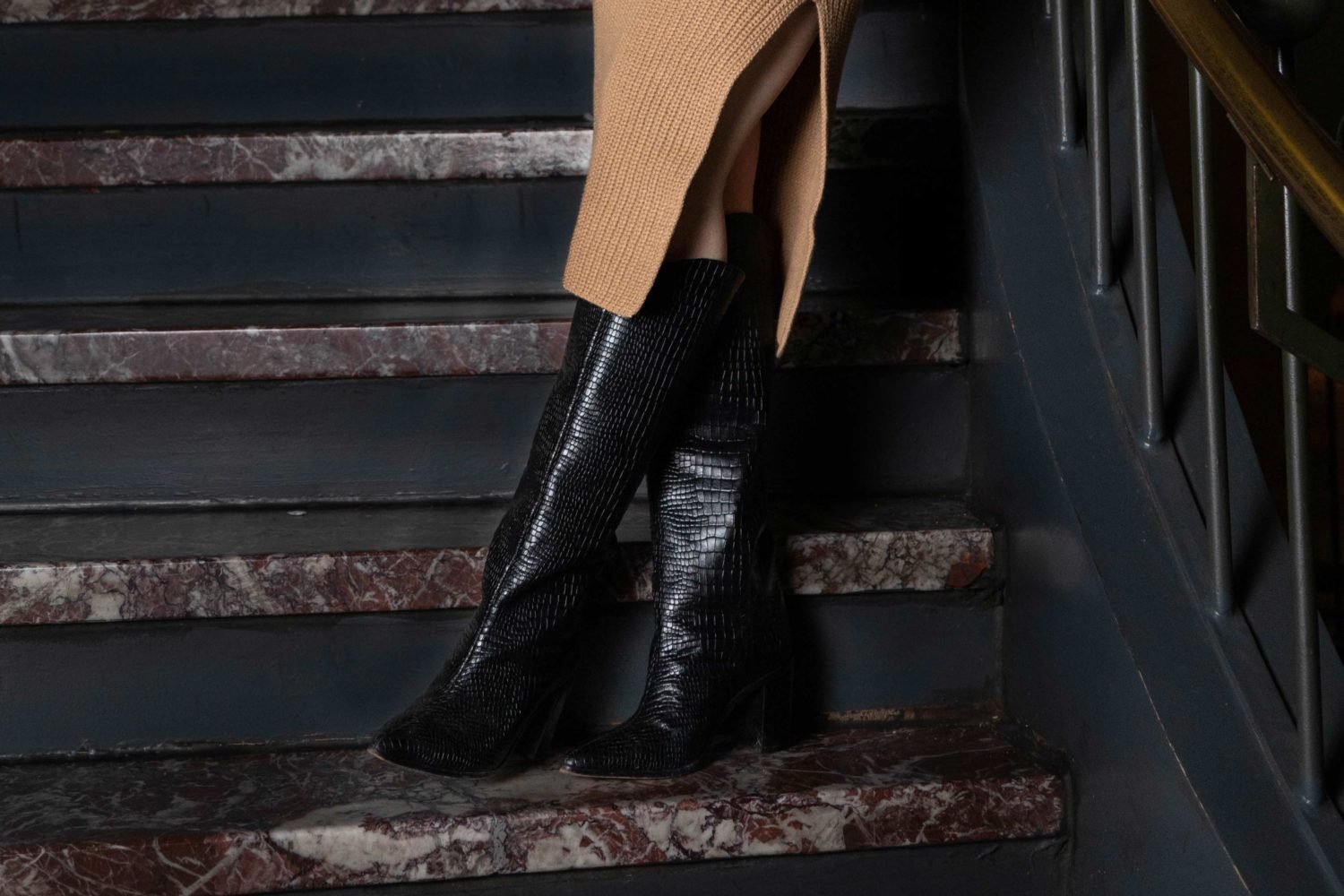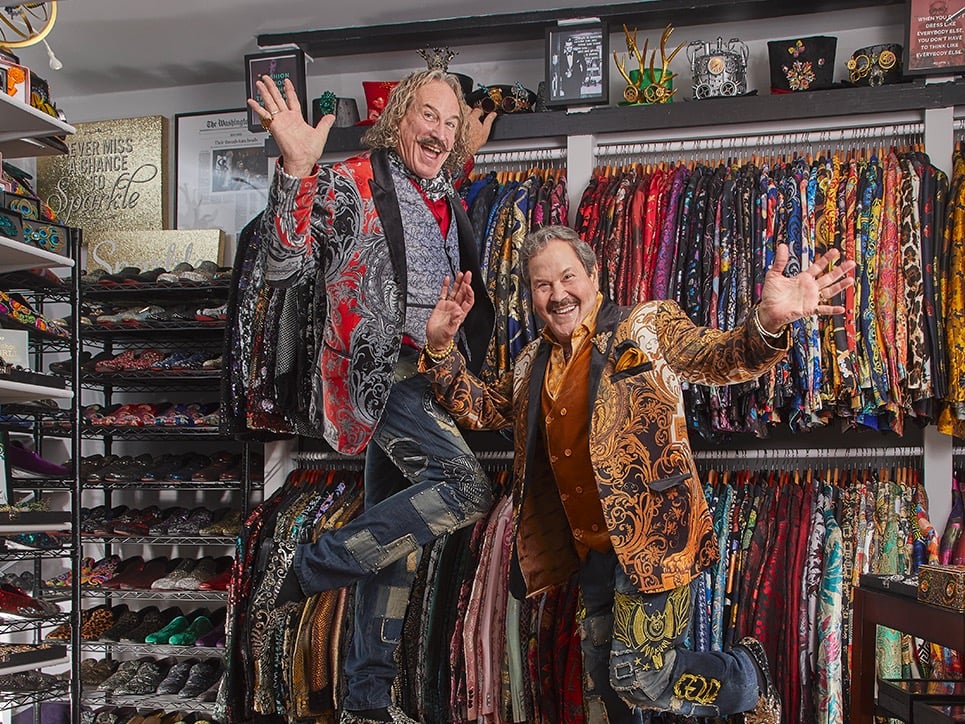Are crow's feet leaving bigger tracks these days? Maybe wisdom and maturity haven't overcome teenage acne scars, or those youthful freckles on the backs of your hands have morphed into age spots.
Good news: A little time and several hundred dollars can take years off your face and hands. We're talking lunchtime fixes–nothing that has you hiding at home for a week. In and out of the treatment in less than an hour, with little or no downtime.
The approach is increasingly popular. According to the American Society for Aesthetic Plastic Surgery (ASAPS), more than a million of us used Botox last year to reduce frown lines. Microdermabrasion, to smooth out skin texture and tone, is up 50 percent. Use of chemical peels has more than doubled in the past 12 months.
You get what you pay for with these treatments. Thousands of dollars and weeks of recovery go into facelifts and other surgical procedures to permanently reshape turkey necks, sunken cheeks, and deeply furrowed foreheads. By contrast, the sort of work that simply softens wrinkles and plumps out indentations is easier on the wallet and the schedule but generally lasts just months.
Besides this impermanence, any medical procedure has risks. DC dermatologist Sandra Read's consent form for collagen injections, for instance, includes this warning, unrelated to her practice: "There is one reported case of blindness due to improper injection of collagen too close to the eye."
"The good news is, we don't have to do any of this," says Read, who often will just counsel patients on long-term skin care. But thousands of Washingtonians want more.
Here's a guide to popular procedures–skin resurfacing, Botox, and collagen and fat injections–including how they work, how they don't, and how much you should be prepared to pay.
SKIN RESURFACING
A Little Off the Top
All kinds of imperfections are visible in the top layers of skin: sun damage, age spots, clogged pores, scars, uneven tone, fine wrinkles, rosacea.
There are three main ways to remove or reduce surface imperfections: chemical peels, laser resurfacing, and dermabrasion. The first two burn through skin with acid or light; the third essentially sands it off. Smoother, more delicate skin underneath then emerges.
None of these is especially painful–at least not in gentle form. The more "controlled dermal wounding," as specialists call it, the longer the recovery, and the worse you're likely to look and feel in the meantime.
All exfoliation techniques can be performed to varying depths. "Lunchtime" methods take three to six subtle treatments over several weeks or months to get the results you would expect from one major treatment that requires time off from work.
"I was disappointed at first," reports Helene, a 44-year-old Arlington mom, who saw little difference in her wrinkles and crow's feet after her first microdermabrasion. But after six treatments, two weeks apart, at DC's Celadon day spa, "I've never had so many compliments. All year people have said, 'Your skin looks great! What did you do?' "
There are downsides. Your skin may be pink or puffy for hours. You may develop whiteheads in the treatment areas, an effect that is temporary. On occasion, discolored spots occur. And nothing is forever: Over time wrinkles will reappear, as will signs of sun damage if you don't protect yourself.
When resurfacing is done on the hands, neck, or chest–where skin is more delicate–healing takes longer. For this reason, treatments shouldn't go beyond the first layer. Peels, for instance, should be light.
In some cases, resurfacing may not be needed. Many dermatologists suggest starting with a prescription-strength lotion like Retin-A, Renova, or Differin. These exfoliate the surface, achieving the same effect to a lesser degree. Some patients are satisfied and stick with the prescription, which insurance may cover–unlike most other skin treatments.
If you opt for resurfacing, be sure to inform the doctor or esthetician if you have ever used Accutane, Retin-A, or other prescription creams; if you tend to form thick or raised scars; if you've had cold sores or herpes-simplex reactions, as skin treatments may set them off again; and what your normal skin regimen is.
If you have a tan, natural or artificial, mention that, too–even if you think it's obvious. "I lower my treatment's energy to compensate," says DC dermatologist Tina Alster. Not doing so could harm your skin.
Though you could book just one appointment and see mild improvement, skin specialists recommend a series for best results. A package usually costs less than buying individual sessions.
And, says Potomac cosmetic surgeon Diane Colgan, "once you get a correction, you have to maintain the effect with a good skin-care regimen at home."
* Microdermabrasion
Sandpaper Your Face?
americans booked nearly a million appointments for microdermabrasion last year. It's the Mid-Atlantic's top cosmetic procedure.
In this method–sometimes confusingly called a peel–a spray of fine aluminum-oxide, diamond, or salt crystals removes the top layer of skin along with blackheads, whiteheads, minor lines and discolorations, large pores, and some scaly textures. The ASAPS says it also helps with crow's feet and acne scars, though only moderately.
Dr. Alster recommends metal crystals over larger, rougher sodium crystals. "With salt you can get tiny cuts and uneven smoothness, a more invasive result," she says.
You might ask for a demonstration on the back of your hand. You'll get an idea how it feels, though not how the long-term results will look; practitioners recommend a series of four to six treatments. "The repair process builds on itself," explains Dr. Read. Adds Kelly Sullivan, a nurse who does these procedures in the Chevy Chase office of dermatologist Arthur Ugel, "It jump-starts everything–collagen growth, blood flow, more even coloring."
"My complexion is much smoother," says Deborah Malakoff, 47, of Arlington, who just finished a series of six at Serenity Day Spa in Old Town. "Does it take away fine lines? Not entirely at my age, but I can see a definite difference in tone and color."
Lucinda Frend, 52, who went to Looks, a salon in Columbia, last summer found microdermabrasion "a little painful." Salon touches like dim lights and cool, scented lotion made up for it, but she experienced one of the procedure's rare drawbacks–streaks and sensitivity on her neck that lasted three or four days. Other than that, she says, "my face felt fresh and looked smoother."
Many specialists combine microdermabrasion with other treatments. Dr. Colgan finds that following it with salicylic acid reduces the number and severity of acne breakouts.
Because microdermabrasion requires more time–anywhere from 20 to 60 minutes–and pricier equipment than peels do, microdermabrasion averages $124 a session in the Mid-Atlantic. We found prices as high as $250; packages and specials can bring treatments as low as $90 each.
* Chemical Peels Quick and Easy
a chemical peel is a bit like those masks you may have tried at home: Brush on a fragrant gel or muddy cream, then peel or wash it off to remove impurities and perhaps reveal softer, renewed skin.
The peels at your dermatologist's office have more kick. Deep phenol peels, sometimes called "facelift in a jar," require sedation and leave your face red and oozing for weeks. TCA peels are less volatile. The mildest peels–with glycolic or salicylic acid–are equivalent to, though generally less aggressive than, microdermabrasion and "cool" lasers for combating uneven tone and color, acne, and minor sun damage. With mild peels, your face may tingle, but it shouldn't burn.
"This and microdermabrasion are the most comfortable and pleasant for the patient," says dermatologist Glenn Fuchs, who has offices in Arlington and DC. Because peels are quick and easy for a doctor to do, they're generally cheaper than microdermabrasion and laser treatments.
The biggest downside: While you usually see some results from microdermabrasion immediately, the action of a peel–the peeling itself–takes place one to three days later. There's also a risk of bleaching, something olive- or dark-skinned people in particular should discuss with the doctor. But "you're not safe just because you're pale," warns Dr. Read. "Think of a porcelain doll with that white, shiny look–that can happen if the peel is too much."
Jerri, a 38-year-old Tysons Corner wom-an, found satisfaction with two low-strength glycolic-acid peels. Jerri, who had "tried everything for acne," says her face "really did peel for two days afterward"; a strong moisturizer from her doctor helped hide the transformation.
Her peels were so effective that she now uses just salicylic acid at home to maintain the effect. "People often comment that I have very good skin, that I look 26 years old," she says.
Contrast that with the experience of Sheila Buckmaster, 50, of Easton, who had a stronger, medium-strength peel. There was pain when the acid was applied to her face, she says, and "for the rest of that day and the next, my skin was shiny and very pink. The three following days were ugly–portions of my skin were wrinkly and brown." After all that, though, she's pleased: "What you take off your skin is as important as what you put on it."
A glycolic peel takes 10 to 30 minutes. We found fees of $55 to $250.
** New Lasers
Kinder and Gentler
no, not the kind that sear off the top level of skin, leaving you to suffer for three weeks. New, nonablative (nonvaporizing) lasers with names like Smoothbeam and Cool-Touch have made lunchtime laser treatment a reality. Your skin's color, texture, and thickness, as well as what results you're looking for, help determine whether laser is the best treatment for you.
These "rejuvenation" lasers are good for fine lines, especially around the eyes; vertical lines around the mouth; some facial scars; age spots and other uneven coloring; and cheek lines attributable to sun damage. Although only surgery can erase undereye bags, the ASAPS says patients may benefit from a laser's mild tightening effect around the eyes. Best results, according to ASAPS, occur for people with fair, healthy, nonoily skin.
Results are not immediate: Because the surface skin is left untouched, you've got to wait two to three months for collagen to regenerate before changes become apparent. New collagen then continues to age at a normal rate.
"You can't do it at lunch to look great at dinner," says Chevy Chase cosmetic surgeon Don Fontana. Or, as an advertisement for NLite Laser Collagen Replenishment phrases it, "You can have it done on your lunch hour, and only you will know."
A series of three to five, a few weeks apart, can remove 20 to 80 percent of wrinkles, spider veins, keratoses (thickened skin tissue), and other imperfections, doctors say. "The problem is, we can't tell in advance who will get what outcome," says Dr. Alster. "It doesn't seem to correlate with skin type, prior treatment, or where on your skin we're working."
If the technician has access to more than one laser, it's common to use one on crow's feet and another near the nose, for example. Areas of thin skin, like around the eyes, tend to respond better than areas of thick skin, like the cheeks.
Different lasers produce different outcomes. NLite, the first one FDA-approved for "cool" facial work, has had mixed reviews. Some patients found CoolTouch painful; a newer version, CoolTouch II, seems to have overcome that problem. Smoothbeam works well on acne scars. IPL, or Intense Pulsed Light, behaves like a laser but at a lower intensity that, says Dr. Alster, "is particularly useful for people with blotchy skin on the face, neck, or chest."
Smoothbeam "packs the most punch," reddening the skin for a few hours: "I wouldn't use it just before a black-tie event that night, but there's no blistering or scabbing," she adds. If the patient has a tan and the doctor's not aware of it, that redness could become an unattractive brown smudge for a week.
To begin treatment, you and the doctor or technician don protective goggles, and you may have a gel applied to your face. Many patients report a stinging sensation from the laser; the feeling is akin to a rubber band's snapping against your skin.
Nancy Stout, a 48-year-old Oakton woman who has had several treatments to reduce fine lines, describes the rejuvenation laser as "like a pen with a tiny light on the end. All you feel is 'zap, zap' while something else cools your face to keep you from feeling any heat or pain."
Like many patients, Stout was skeptical at first that the treatment had done anything. But after four months, "my sisters said, 'Wow! Your lines are gone!' They're definitely less pronounced, and I certainly haven't developed any new ones."
Laser treatment takes 15 to 40 minutes; both the fee and the length of time depend on how much work you're having done. Around Washington we found fees of $150 to $500.
BOTOX
Treatment With Muscle
Botox is now the nation's number-one cosmetic procedure, surgical or otherwise. Demand has surged nearly 2,500 percent in five years.
Why? "It works," says Dr. Fontana. Specifically, it temporarily paralyzes muscles whose contraction causes expression lines–crow's feet, forehead crinkles, and frown lines between the eyebrows. (Botox is not used lower on the face because expression-related muscles there need to stay mobile.)
Botox, short for botulinum toxin, was approved years ago by the Food and Drug Administration to fight facial spasms. Doctors started using it off-label when its wrinkle-reducing properties were discovered. The FDA is expected to approve its cosmetic use very soon. Myobloc and Dysport are related agents with similar effects.
During a treatment, a doctor injects one or more facial muscles with a tiny needle, and you're told to work the muscle over the next several hours to distribute the toxin. You should avoid bending over for four to six hours; on rare occasions, toxin has migrated into an eyelid, causing weeks of droopiness.
The effects take hold two to six days later. Try as you might, that muscle is not going to move–you'll have trouble looking angry or tired.
At least for a while. Dr. Fuchs says he's seen results last seven months, but three to four is typical. Clinical studies suggest the effect is cumulative; over years, as the muscle atrophies, you can maintain the look with fewer treatments. The younger the patient, the better the outcome: Trying to smooth a lifetime of expression lines is tough, which is why results may not be dramatic for those over 65.
There is anecdotal evidence that paralyzing brow and forehead muscles can relieve migraine and tension headaches.
Slight bruising is likely, but it doesn't last long. And with extremely fine, Teflon-coated needles, which DC surgeon Robert Adrian uses, you should feel nearly nothing. If you're highly sensitive, ask your doctor about dabbing on an anesthetic such as Emla.
Fair warning: Because Botox and similar agents work on muscles only, they won't affect wrinkles caused by sun damage or aging. And, says Maureen, 46, of Vienna, "the little pen marks and dots of blood where the injections went don't look so pretty. I put a little concealer on the sites if I'm going out afterward." (You can carefully wash off the ink, if any; the dots heal in a day or two.)
This procedure takes 5 to 10 minutes. The average Mid-Atlantic cost is about $400; we found local fees from $250 to $600.
COLLAGEN AND FAT
Getting Your Fill
Humans start out with lots of collagen, a natural protein that gives structural support to skin, muscles, tendons, and bones. When facial skin starts losing its resiliency and tone, highly purified cow, pig, or human-donor collagen can fill in–literally. Small amounts are injected to smooth out wrinkles, scars, and furrows, and the cosmetic effects are immediate. More than 3,500 US doctors use it every year.
Collagen, your own or a donor's, is not forever. Although one treatment can do wonders, sometimes it takes two or three to get the best results. Usually less is needed for touchups than for the original treatment, which typically lasts three to six months–although one manufacturer, Collagen Corporation, says some corrections have lasted two years.
Like your own collagen, Zyderm and Zyplast supplements are subject to the same forces that cause lines and sagginess: Smiling and frowning, for example, will break down implants and lead to fresh wrinkles.
Narrow, "ice pick" acne scars and other sharp indentations often can't be helped. For overall textural change, you're better off with resurfacing. And cow or pig collagen treatment isn't a spur-of-the-moment thing: You first need to pass two allergy tests, about a month apart. The chance of a reaction or other complication is 3 percent, according to manufacturers and doctors, and symptoms include swelling, redness, and hives. Less than 1 percent report flaky skin or scabs at the injection sites.
"I'm amazed at the dramatic change," says Marilee, 42, a Bethesda woman who had collagen placed in her nasolabial folds. "People don't notice when your lines are gone, but they do notice when they are there. My only regret is that I didn't do this sooner."
The first time, Marilee was not sure how she would look immediately afterward, so she had the injections at day's end. "But it was just some red dots," she says. "I could have covered them with a dab of makeup and gone right back to work." Other patients report some puffiness or overcorrection at first.
It takes ten minutes for an anesthetic cream to numb the skin (patients often report pain when injections are near the nose or lips), then five minutes for perhaps a half dozen tiny injections on each side of the mouth. "Less time than getting my hair colored," Marilee notes.
Some doctors charge for the allergy tests, as much as $195. Collagen injections average around $350 in the Mid-Atlantic; locally we found $225 to $500 per treatment.
If you're allergic to collagen or have medical conditions that can preclude its use–such as other severe allergies, lupus, or rheumatoid arthritis–fat injections are an alternative for filling facial creases and scars.
Fat, like collagen, is subject to wear and absorption, but fat injections seem to stay put longer–up to a year from one treatment, says Susan Kramer, nurse for Chevy Chase surgeon Stephen Kay. And your body won't reject its own material.
Steven Hopping, a cosmetic surgeon in downtown DC, says the results can last up to two years if the patient does a series of treatments. "About 30 percent of the fat survives in the longer term, so we do three treatments over six months," he says. "That's 30 plus 30 plus 30 for a 90-percent correction."
A major drawback is its complexity. Fat has to be harvested by a large needle from another part of your body, which is tedious and painful–you'll need a local anesthetic. Harvested fat has to be purified. Only then is it injected into folds or scars. The extra steps make fat more expensive, time-consuming, and risky than collagen.
Dr. Hopping does a lot of fat injections on Fridays for a reason. "If collagen is a lunchtime procedure, fat is for a weekend," he says. Injections usually leave bruises and puffiness, and there's about a 10-percent overcorrection for a few days.
Few local doctors do fat injections separately from liposuction or a facelift; if you're having fat removed anyway, that's an opportunity to get good use from it. Harvested fat can be frozen for later treatments. The average Mid-Atlantic cost last year was $989; in Washington we found prices of $1,900 to $3,500, which may cover one to three treatments. *


















